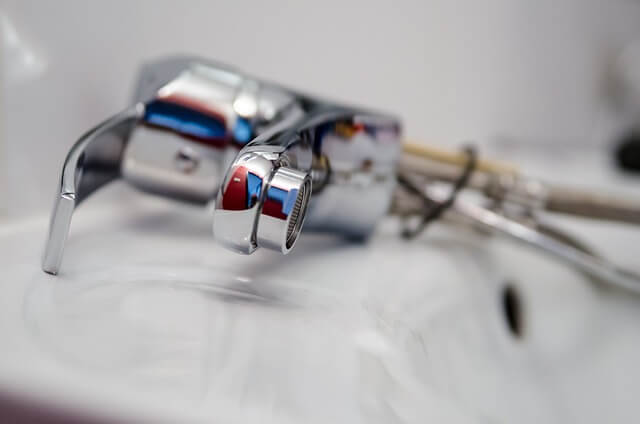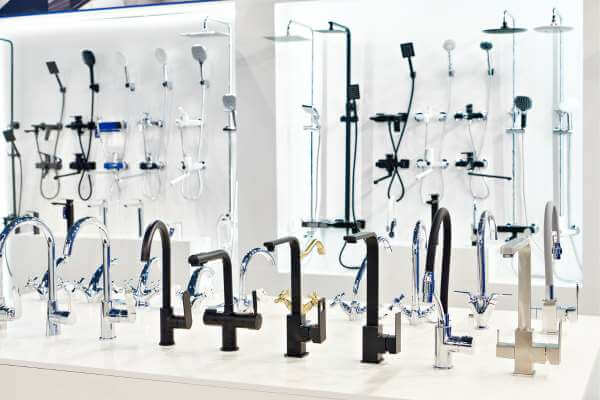A kitchen faucet base can become loose over time due to frequent use or water pressure. This can cause the faucet to wobble, leak, or make squeaking noises. To fix this problem, you need to tighten the nut that holds the faucet base to the sink. This is a simple DIY task that you can do with some basic tools and a few minutes of your time. Here are the steps to follow:
What You Need
- A basin wrench, vice grips, or pliers
- A flashlight
- A towel
How to Tighten Kitchen Faucet Base?
Steps to Follow
- Clear the space under the sink. Remove any items that are stored there and place a towel on the floor to catch any water drips.
- Turn off the water supply valves. Locate the two valves under the sink that control the hot and cold water flow to the faucet. Turn them clockwise until they are fully closed.
- Locate the nut that secures the faucet base. Use a flashlight to see under the sink and find the nut that connects the faucet base to the sink. It may be covered by a plastic cap or a metal plate that you need to remove first.
- Adjust your wrench to fit the nut. Use a basin wrench, vice grips, or pliers to grip the nut firmly. A basin wrench is specially designed for this purpose and can reach hard-to-access places.
- Tighten the nut by turning it clockwise. Apply some pressure and turn the wrench until the nut is snug. Do not overtighten it as this may damage the faucet or the sink.
- Check if the faucet base is stable. Go back to the top of the sink and wiggle the faucet base gently. It should not move or make any noise. If it does, go back under the sink and tighten the nut a bit more.
- Turn on the water supply valves and test the faucet. Turn the valves counterclockwise until they are fully open. Turn on the faucet and check for any leaks or drips. If everything is fine, you have successfully tightened your kitchen faucet base.
- Replace any items that you removed from under the sink.
Tips and Warnings
- If your kitchen faucet has two handles, you may need to tighten two nuts instead of one.
- If your kitchen faucet has a pull-out spray head, you may need to disconnect it from the hose before tightening the nut.
- If you have trouble reaching or gripping the nut, you may need to use an extension or a different tool.
- If you notice any corrosion or damage on the nut or the faucet base, you may need to replace them with new ones.
Common FAQ
How do you tighten a nut under a faucet?
A basin wrench is a tool with jaws that grip the nut and a long handle for convenient access. Place the wrench’s jaws around the nut and turn the handle in a clockwise direction. As you do this, the jaws will automatically tighten. Continue turning the handle until the nut is securely tightened and the fixture remains in place.
What tool is used to tighten kitchen faucets?
basin wrench.
A basin wrench is a plumbing tool specifically designed for working with tight spaces. It features a long handle and a rotating gripping head that adjusts itself automatically. This tool is primarily used to tighten or remove the mounting nuts found on faucet tailpieces. Its unique design allows it to access areas that are difficult to reach with other tools.
Why does a faucet become loose?
The faucet or handles of a sink are occasionally fastened to the sink using a retaining nut positioned beneath it. When this nut becomes loose, it causes the handle to become loose as well.
How tight do you tighten faucet supply lines?
One of the main challenges when replacing water supply lines is determining the appropriate tightness of the connections to avoid water leaks. In general, the recommended approach is to hand tighten the connections initially and then utilize a wrench for the final 1/4 to 1/2 turn, as specified in most instructions. This ensures a secure and leak-free connection.
Conclusion
Tightening a kitchen faucet base is an easy and quick way to fix a loose or wobbly faucet. All you need is a wrench, a flashlight, and some patience. By following these steps, you can save money and time by avoiding calling a plumber.


 Hi, my name is Debra Klein and I love modern kitchen designs! As a product reviewer, it’s my mission to help homeowners choose the right modern kitchen accessories for their homes. I want to give them the best solution possible so they can make the best decision for their needs. Thanks for reading!
Hi, my name is Debra Klein and I love modern kitchen designs! As a product reviewer, it’s my mission to help homeowners choose the right modern kitchen accessories for their homes. I want to give them the best solution possible so they can make the best decision for their needs. Thanks for reading!




